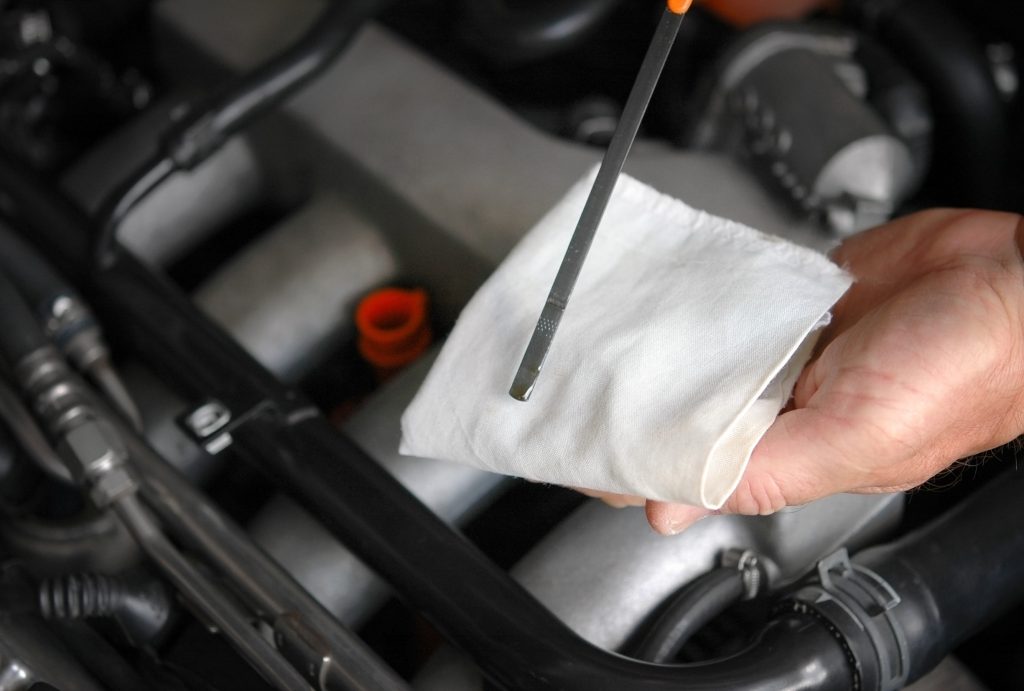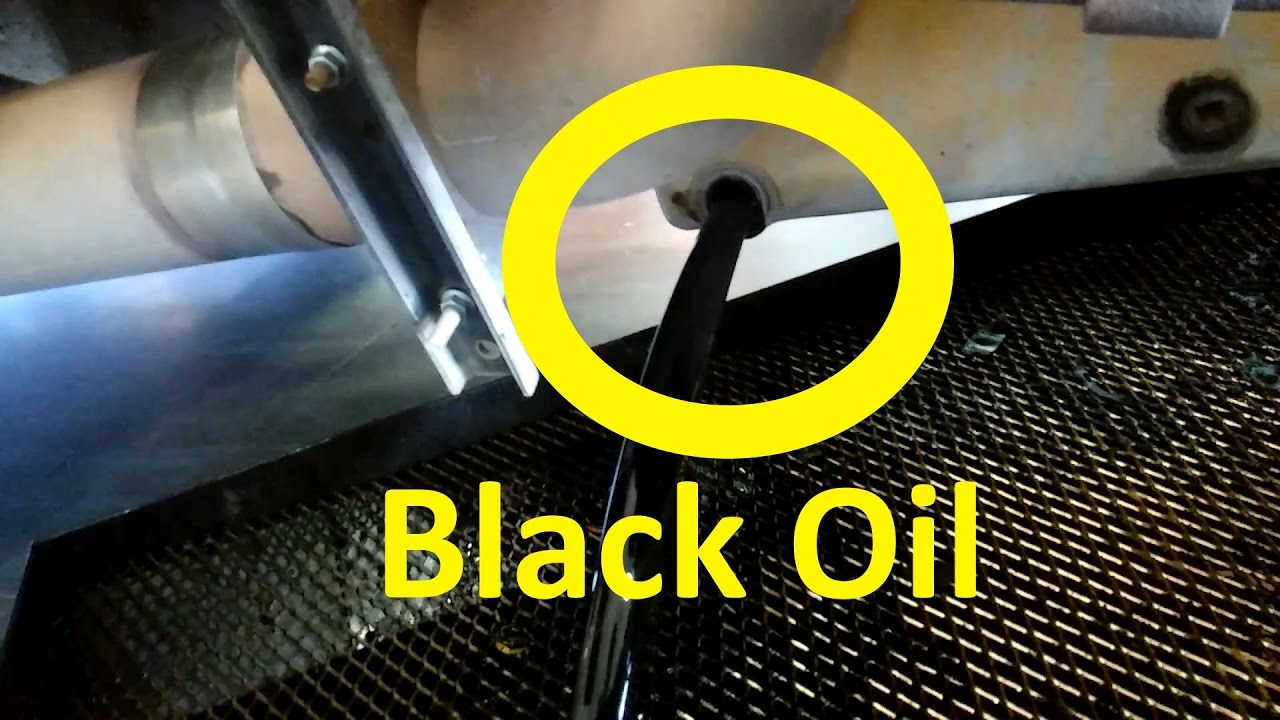When oil doesn’t stick to the dipstick, it might be because of many possible reasons, such as low oil levels, a light oil mixture, a slippery dipstick, or the fact that you just bought a brand-new vehicle.
lets get deeper into this issue and try to diagnose it correctly.
When oil doesn’t stay put on the dipstick, it’s a typical issue among car owners. If you’re unfamiliar with automotive maintenance, a good rule of thumb is to check your engine oil using a dipstick once a week to once a month, but it depends on how often you drive.
Using a dipstick to check your engine’s oil level and other fluids may help you catch problems early and save money on repairs, as well as alert you when it’s time for an oil change. The health of your car’s engine depends on your regularly checking the oil level.
Many people have trouble getting the oil to stick to the dipstick, making it impossible to get an accurate reading.
After getting an oil change, it might not be very clear. Or if you know for a fact that your engine’s oil level is not at zero. Your engine may be leaking oil or using too much oil.
Do not worry over that possibility; there are plenty of other, less serious causes for the problem. However, those who are experiencing the all-too-frequent problem of oil not sticking to the dipstick should stick around, as we will be discussing the most prevalent reasons for this issue and how to fix it.
Common reasons for Oil not Sticking to the Dipstick.
There might be many causes for your oil not sticking to the dipstick, but it’s best to start with the most obvious ones, as the most common solution is a simple one.
Use The dipstick in the right way

Make sure you’re using the correct method to measure the oil in your car before doing anything else. Before pulling out the dipstick to check the oil level, ensure the car is parked on a flat surface, and the engine has been switched off for at least 15 minutes. Seek out the dipstick next.
While every vehicle is slightly different, you can usually find the dipstick on the left side of the engine, and its handle is bright yellow or orange. When you find the dipstick, remove it from the engine and wipe the end clean using a towel.
Lastly, gently reinsert the dipstick into its slot, and then smoothly remove it to check the engine oil level. The oil level in your engine might be determined by examining the dipstick, which should now be slick with oil if everything goes according to plan.
Don’t worry if the oil still won’t stick to the dipstick after you’ve followed the steps above. There are probably a lot of easy reasons why this is happening, and a quick solution could still be possible to help you receive an accurate reading on the oil levels in your automobile.
Oil Temperature
The oil temperature in your engine might be a major effect on how accurately the dipstick reads. Most manuals will tell you to wait fifteen minutes or overnight after turning off the car before checking the fluid levels using the dipstick.
This is because the oil temperature in your engine might be one of the primary causes of oil not sticking to your dipstick. Measurements of engine oil should be taken at room temperature or slightly cooler, but never at operating temperature. If the oil doesn’t come out on the dipstick, you need to be more specific.
The results of an oil level check in your vehicle will vary depending on the temperature used to take the reading. To check the oil level, you must insert the dipstick into the engine’s oil, but if the oil is too hot, it may flow off the end of the stick and not provide an accurate measurement.
There is a common practice of waiting fifteen minutes after turning off the engine before checking the oil. If your oil isn’t sticking after attempting this method, it might be because your engine or oil brand isn’t compatible. But, again, this is because dipsticks work best in cold oil.
If the oil you are using makes it difficult to get an accurate reading on the dipstick, consider letting the engine drop down to room temperature first.
Other Reasons for Oil Not Sticking to a Dipstick
Even if you are using the dipstick appropriately and have tried it with oil of differing temperatures, there are a number of other possible explanations for the problem. Some of them may be serious enough to need a visit to the mechanic, but the average person may easily fix many others. Common leading causes of this issue include:
Not Enough Oil!
You may not have put in enough oil, which is another reason why the oil level is low. Different engines have different amounts of power, so you need to know what yours can do. This will help you add the right amount of oil to the engine.
Leakage of Oil
If you haven’t changed the oil recently, you might check the dipstick after adding any to see if that was the problem. If the engine still shows no oil on the dipstick after you’ve added some, there may be a leak somewhere; you should get it looked out.
Oil is too light
Oil is Too Light – Another reason why many people may think there is no oil on the dipstick is because the oil is considerably lighter in color than they are usedto. A black, brown, or amber color should be seen on the dipstick. Get your car checked out quickly if the oil has suddenly lightened in color; this might indicate that coolant is seeping into the engine.
Engine Oil Consumption
Your engine may use more oil than usual if the head gasket is broken. This is because the head gasket keeps the engine block and the cylinder head from leaking. When this seal is missing or broken, the car uses more oil than it should. Because the engine is using more oil, the dipstick can’t tell how little oil is in the crankcase.
Slick dipstick
Another typical reason for oil not to cling to the dipstick is that the stick itself is too smooth. Due to differences in surface tension and viscosity, the oil in your engine may not be able to cling to the smooth metal of the dipstick. So I have a suggestion: use some 300-grit sandpaper to rough up the surface of your dipstick and see if it improves things.
New technology can be the problem
You’ve got a new car, and some of them have electronic oil level controls that won’t let you check the level unless the vehicle is parked in a level spot with the engine running and the oil at a comfortable temperature. If your vehicle is equipped with an electronic oil level controller, this may be the source of your difficulty.
Final Word
As a whole, don’t freak out if your oil won’t stay on the dipstick. There are a number of basic checks you can make without taking your car into the shop that will tell you if it’s time to call in the pros.
Some automobile enthusiasts who regularly drive their vehicles like to check the oil more frequently than once a week to reduce the need for expensive repairs.
Dipsticks can be challenging, but now that you’re aware of the typical problems they can cause, you’re equipped with the knowledge you need to evaluate the situation and find a solution.





